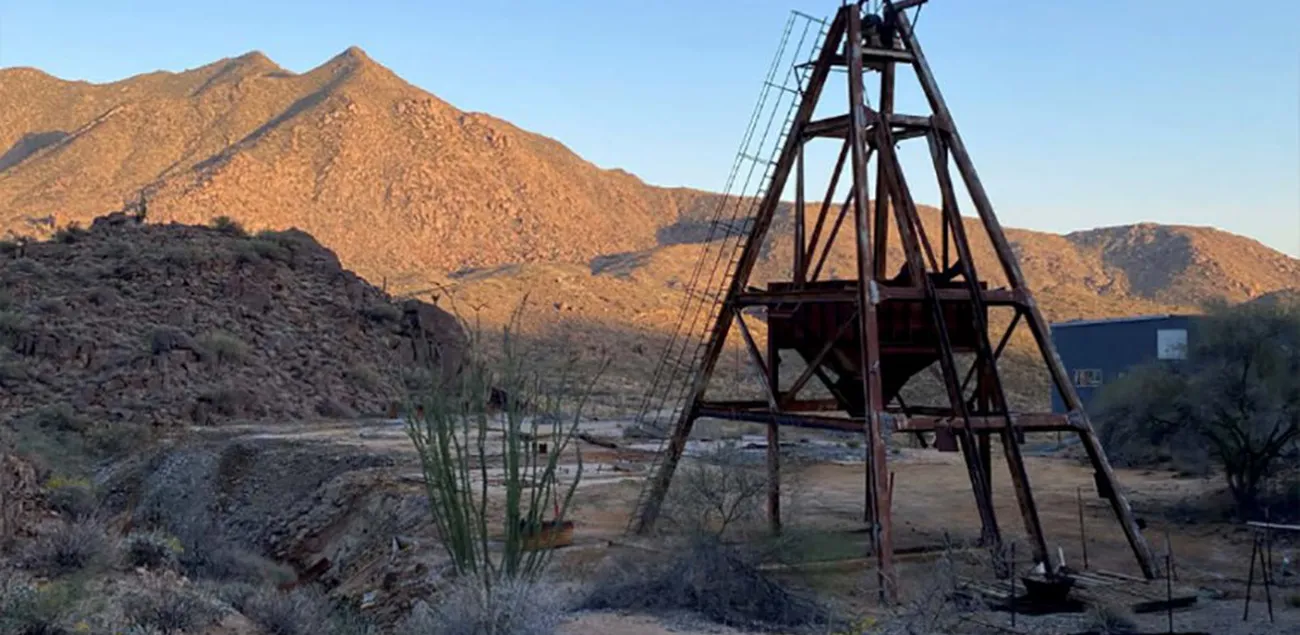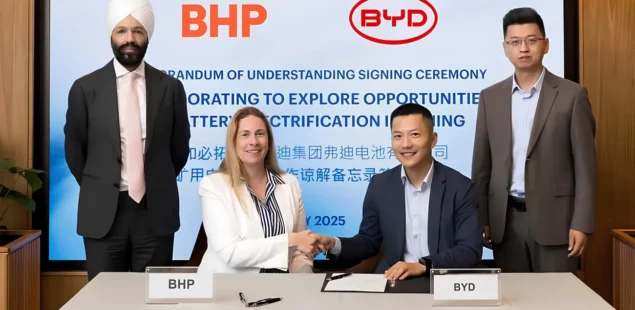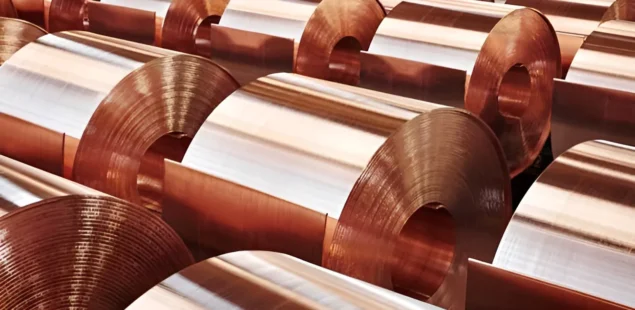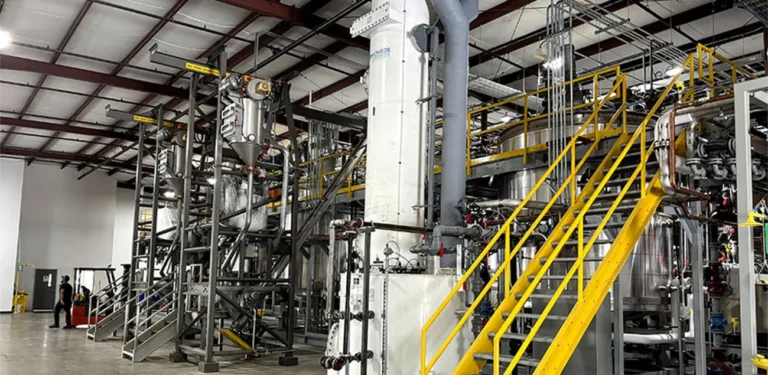
Central Asia Metals Raises Bid for New World Resources
Central Asia Metals has increased its takeover offer for Australian copper developer New World Resources from A$185 million ($119 million) to approximately A$230 million ($130 million). The revised bid of A$0.062 per share represents a 24% increase from the company's initial May proposal and comes as part of a competitive bidding war with Canada's Kinterra Capital.
The New World Resources board has unanimously recommended that shareholders accept the deal, citing the substantial premium offered and a temporary $10 million financing package as key benefits. The transaction is expected to close in the third quarter of 2025, pending regulatory approvals from the United States and other jurisdictions.
Central Asia Metals operates a copper production facility in Kazakhstan that uses solvent extraction-electrowinning technology to recover copper from waste dumps at the former Kounrad mine. The plant has produced 165,000 tonnes of copper cathode since operations began in 2012, with an estimated 85,000 tonnes of additional production possible through 2034. The company also owns the Sasa lead-zinc mine in North Macedonia and holds a 28.7% stake in Aberdeen Minerals, which explores for non-ferrous metals in northeastern Scotland.
New World Resources owns three copper development projects in the United States, with the Antler project in Arizona being the most significant. The deposit contains 14.2 million tonnes of resources at 3.8% copper equivalent grade, along with zinc, lead, silver, and gold. Plans call for an underground mine producing approximately 30,000 tonnes of copper concentrate annually over a 12-year mine life. The acquisition would position Central Asia Metals as a major copper producer in Central Asia, particularly as global copper markets face projected long-term supply shortages.
Gazprom Neft Advances Lithium Production Plans
Gazprom Neft has announced plans to begin industrial lithium production by 2028, extracting the metal from formation waters at hydrocarbon deposits in the Orenburg region. The initiative supports Russia's goal of producing at least 60,000 tonnes of lithium carbonate annually by 2030 to supply domestic lithium-ion battery manufacturing facilities.
The company's interest in lithium extraction dates back to 2021, when it signed a memorandum with Irkutsk Oil Company to develop the Kovykta gas condensate field's lithium-rich brines. A year later, Gazprom Neft agreed to cooperate with Russia's Ministry of Industry and Trade on research and development for domestic lithium extraction technologies. The original timeline called for construction to begin in 2023 and commercial production to start in 2025, with annual lithium carbonate output exceeding 700 tonnes.
Gazprom Neft's move reflects a broader trend of oil and gas companies entering the lithium sector. Chevron recently acquired 50,600 hectares in Texas and Arkansas for lithium extraction from the Smackover Formation, joining ExxonMobil, Occidental Petroleum, and Equinor in pursuing similar projects. While these brine-based operations are growing in number, they remain smaller in scale compared to traditional hard-rock lithium mining operations.
Canada-US Aluminum Trade Tensions Persist
The Canadian government plans to adjust aluminum import duties in July as part of its response to US President Donald Trump's trade policies. This action is part of Canada's broader strategy to protect its domestic market, which includes restricting access to federal government contracts and addressing global metal overcapacity based on country-of-origin principles.
The two countries are currently negotiating over the 50% tariffs on aluminum imports that Trump imposed on Canadian products. These duties, which doubled from the initial 25% rate implemented in March, apply to both raw aluminum and various semi-finished products including flat-rolled materials, extruded profiles, and castings. The current tariffs are considered more stringent than similar measures introduced in 2018, as they eliminate previous exceptions and alternative arrangements.
Canadian Prime Minister Mark Carney and President Trump have discussed concluding a new economic agreement to regulate trade relations between the countries. The stakes are significant: Canada produced 3.3 million tonnes of primary aluminum last year compared to just 670,000 tonnes in the United States, where high electricity costs have made domestic production less competitive. Canada supplies nearly 60% of US aluminum imports, far exceeding other suppliers like the UAE (8%), Bahrain (4%), and China (3%). A prolonged trade dispute could create major problems for both Canadian producers and American consumers who rely on Canadian aluminum.
Hindalco Industries Expands US Presence
Hindalco Industries has acquired AluChem Companies, a US specialty alumina producer, for $125 million. This marks the Indian company's third major US acquisition following its purchases of Novelis in 2007 and Aleris in 2020, demonstrating a clear strategy to expand in the American market.
The acquisition of AluChem will add 60,000 tonnes of annual specialty alumina capacity to Hindalco's existing 500,000 tonnes, supporting the company's goal of reaching 1 million tonnes of total capacity. Specialty alumina is used in lithium-ion battery manufacturing for electric vehicles and in semiconductor production, both rapidly growing markets.
Hindalco's expansion comes as other international players also target the US aluminum sector. Emirates Global Aluminium announced plans in May to invest $4 billion in a 600,000-tonne-per-year aluminum plant in Oklahoma, with construction expected to begin in late 2026. The UAE company previously acquired aluminum scrap recycler Spectro Alloys and is negotiating with Oklahoma authorities for electricity supply contracts and tax incentives. Unlike Emirates Global Aluminium's greenfield approach, Hindalco is focusing on acquiring existing operations to quickly expand its specialty alumina footprint.
Global Gallium Market Attracts New Players
Eurasian Resources Group plans to invest $20 million to establish gallium production in Kazakhstan, targeting an annual output of 15 tonnes starting in 2026. The company will extract gallium from red mud waste generated at its Pavlodar aluminum plant, positioning Kazakhstan as potentially the world's second-largest gallium producer after China.
Gallium is primarily obtained as a byproduct of processing bauxite and nepheline into alumina, though it can also be recovered from coal and oil and gas field waters. Global annual production is limited to approximately 760 tonnes, with China accounting for 750 tonnes and the remainder coming from Japan, South Korea, and Russia. The metal is critical for semiconductor manufacturing, LED production, and emerging applications in electric vehicle charging systems.
The European Commission has recognized the strategic importance of gallium by designating Greek company Metlen Energy & Metals' 50-tonne-per-year production facility as a strategic project. Meanwhile, Rio Tinto and Indium Corporation have completed the first phase of their gallium extraction research, successfully producing a pilot batch from bauxite processed at Rio Tinto's Quebec alumina refinery. If successful, their demonstration plant could produce up to 3.5 tonnes annually, with potential for full-scale production at the Vaudreuil facility.
The growing interest in gallium reflects its expanding applications beyond traditional uses in thermometers and nuclear reactor coolants. Chinese companies have developed high-power EV charging stations using liquid gallium-filled tubes instead of copper cables for improved heat dissipation, while Japanese firms Mazda and Rohm Semiconductor are developing lighter, more compact gallium components for electric vehicles.



